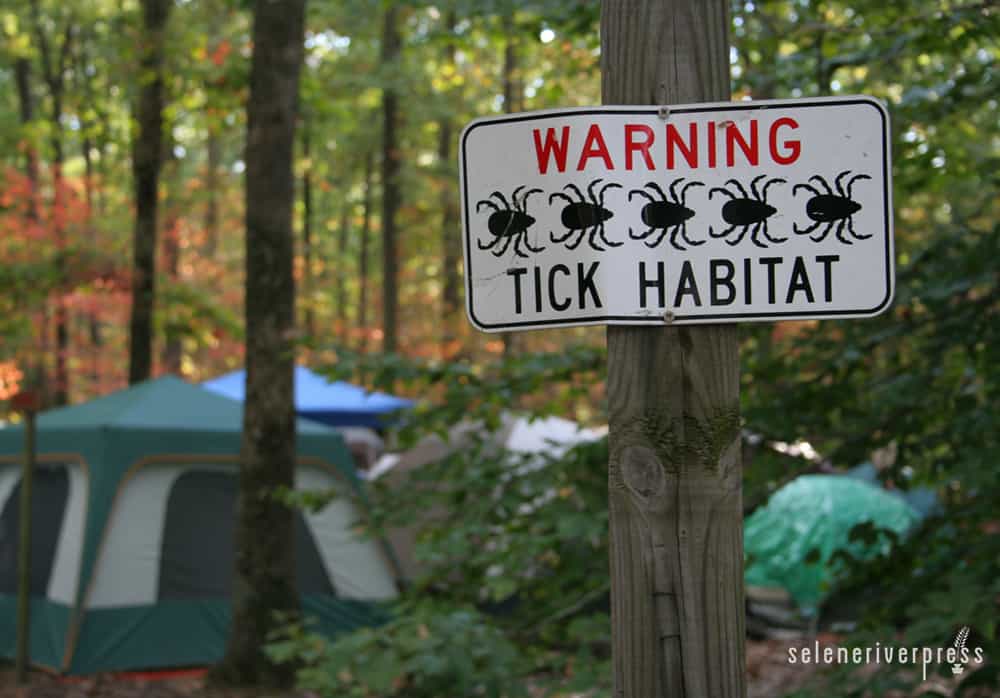My mom was diagnosed with Lyme disease a couple of summers ago. I happened to be home for a visit at the time, and seeing how she suffered before she found out the cause stuck in my head and really ticked me off. My parents’ dog ended up with Lyme disease that summer as well.
Of course, humans (and dogs) are infected with Lyme when they’re bitten by an infected blacklegged tick (which are incorrectly referred to as deer ticks more often than not). Having grown up on a farm in the Midwest, I’ve dealt with ticks most of my life. But I just don’t remember them causing such health problems. Sure, they gave us the heebie-jeebies when we found them on our bodies or on our dogs, but Lyme disease wasn’t something we’d heard about or feared. When did that change?
I was surprised to find out how long Lyme disease has been around. The first documented case was in 1975 in Lyme, Connecticut. (Hmm…wonder how they came up with the name?) Anyway, the disease was classified when a group of kids and adults began reporting unusual arthritis symptoms. In 1982, it was discovered that the bacterium Borrelia burgdorferi was the culprit
Here’s another unexpected factoid I dug up: it’s a myth that blacklegged ticks typically get Lyme from deer. Rather, the white-footed mouse infects approximately 90 percent of ticks that feed on them. The poor deer have been getting a raw deal all along, huh?!
Now let’s talk about the who, when, where, what, and how of this potentially debilitating infection.
Who? The Centers for Disease Control and Prevention Lyme disease map for 2015 shows the majority of reported cases were concentrated in the Northeast corner of the United States, with a good splattering in Wisconsin and Minnesota and sporadic instances in the rest of the country. (It would be interesting to find out if the latter, sporadic cases could be linked to travel back and forth from the Northeast or if they originated locally.)
When? Many of us believe spring and summer is tick season. However, according to the New York State Integrated Pest Management Program, it’s tick season all year long. Only extreme, bitter cold can take this pest out. Otherwise, they shelter until it’s warm enough to head back out on the surrounding vegetation and wait for an unsuspecting meal ticket to walk by.
Where? Blacklegged ticks commonly lurk in wooded areas or spots with tall grass, so that’s where you’re most susceptible. You can encounter them along your favorite hiking trail or even your backyard. This doesn’t mean you should stay away from these areas. You simply need to take precautions before and after.
What? Some obvious ways to limit your exposure would be to keep your lawn mowed and avoid long grass on your hikes. As you enjoy these spots, wear long pants and sleeves to avoid skin exposure. Insect repellent can help keep the ticks at bay. When you get home, be sure to check yourself. If one of those pests hopped a ride, remove it as quickly as possible.
How? You should get tested if you show any of the common symptoms associated with Lyme disease: fatigue, chills, fever, achiness, and the classic bull’s-eye rash around the bite. If you catch it quickly, Lyme can be treated successfully with antibiotics.
The Fairy GutMother used the GAPS diet to augment the healing process when she contracted Lyme’s.
And here’s a clinic that treats Lyme with biological medicine: the Paracelsus Clinic.
If you agree that it’s time to get ticked off at these pests and the troubles they cause, be sure to take some self-healther steps to protect yourself and your family.
Image from iStock/jwilkinson.



